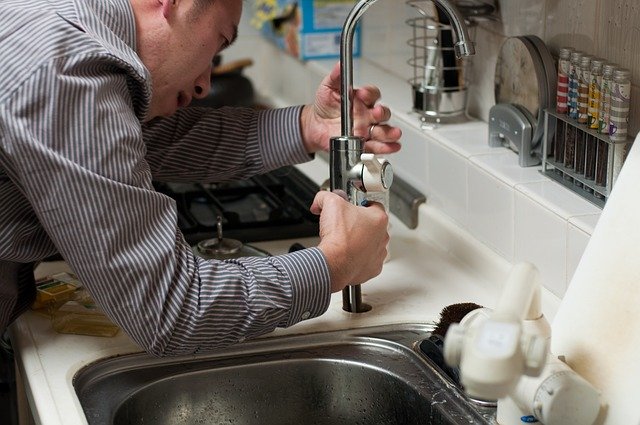Leaky Pipes
Finding a leak is only the beginning of the problem. Water from leaks can creep everywhere, along pipes and joints, soak through walls and ceilings. You may have to cut into a wall to find one. You’ll find most leaks occurring at fittings.
When you do succeed in finding the leak, you can make temporary repairs using a variety of products. But keep in mind that a temporary fix is just that – temporary. You should get a temporary fix repaired properly as soon as possible.
Temporary Fixes
The most useful product for temporary fixes at joints and fittings is plumber’s epoxy putty which is available at any hardware store. First, turn off the water supply leading to the leak. If you’re not sure, you can turn off the main for enough time to make the repair. Tear off enough of the ribbon to knead and cover the joint.
Be sure to follow the instructions with the putty. When you’re done, turn the water back on and check for leaks to be sure you fixed it. But this is only temporary!
The most rudimentary pipe repair is a portion of a tire tube wrapped around the pipe tightly and fastened on each end with hose clamps. Today, there are tapes with waterproof adhesives, especially for leaks. They are very effective. If the pipe itself is leaking. It does not work well at fittings.
You can also get a can or tube of liquid rubber sealant which usually works well. But in all cases, remember to turn off the water first and when done, turn it back to see if it worked. There are also a variety of clamping devices that are very effective. Check your hardware store and ask for help in finding the proper clamp for your type of leak.
Frozen Pipes
I remind you, not to patronize you, that water expands when it freezes and pipes exposed to freezing temperatures can get plugged with ice and in many cases cracked by expansion. If you haven’t already done so, consider an ounce of prevention.
If you have pipes subject to the elements, like in an outside wall or in a basement, you can cover them with pipe insulation which helps to reduce freezing. You can use an electrically heated pipe cover but you need power which may not be convenient. Also, electrical pipe covers can deteriorate with time and become a fire hazard. So as effective as they are, you have to watch them.
If you find a frozen pipe, check it for cracks. Turn off the water supply, drain the pipe and heat it with an electric hair dryer until the ice melts. You can also use a hot.wet towel wrapped around the pipe, replacing it until the ice has melted. When melted, turn the water back on and if you’re lucky, the pipe won’t have cracked and you’re fine. If you see a leak, make a temporary repair as described above. A word again to the wise – temporary is temporary. Another tip is to never make a quick fix behind a wall. That’s bad news.
For more information, take a look here: elizabethdrainservice.com/about-us.html

